The world has plenty of spectacular destinations on offer to make the most of the festive season. Whether you’re looking for snow or sun over Christmas and New Year, there’s bound to be a travel destination fit for your bucket list! But since these experiences and locations become so closely associated with Christmas, it can often mean large crowds, spiked prices and even some internationalised festive season clichés.
For a Christmas holiday unlike any other, why not head somewhere slightly unexpected? Visit Spain this Christmas, and delve into the rich history of Spanish Christmas, experience the memorable seasonal traditions, see the shimmering sights and feast on local food. If you’re ready to discover why Spain is an incredible Christmas holiday destination, read on!
Related: Enjoy these warmer places when you visit Spain in winter!
Here’s why you should visit Spain over Christmas:
The Spanish have a rich history of celebrating Christmas
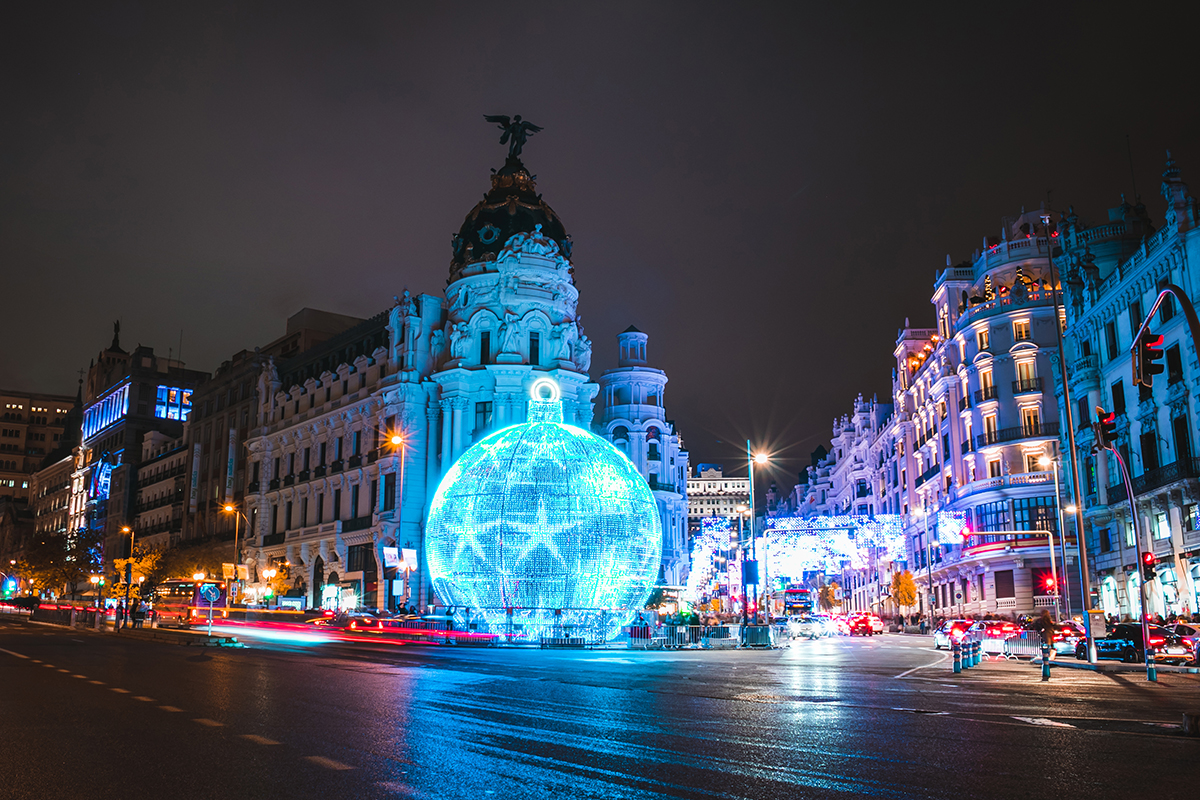
Spain has a mixed history of Pagan and Christian traditions. Each year, practically the whole of December until 6 January, Spain becomes a Christmas wonderland and the Catholic traditions come out. Christmas is called Navidad in Spain and it comes with a variety of events and traditions. Let’s get into those!
There are plenty of Spanish Christmas traditions to witness and take part in
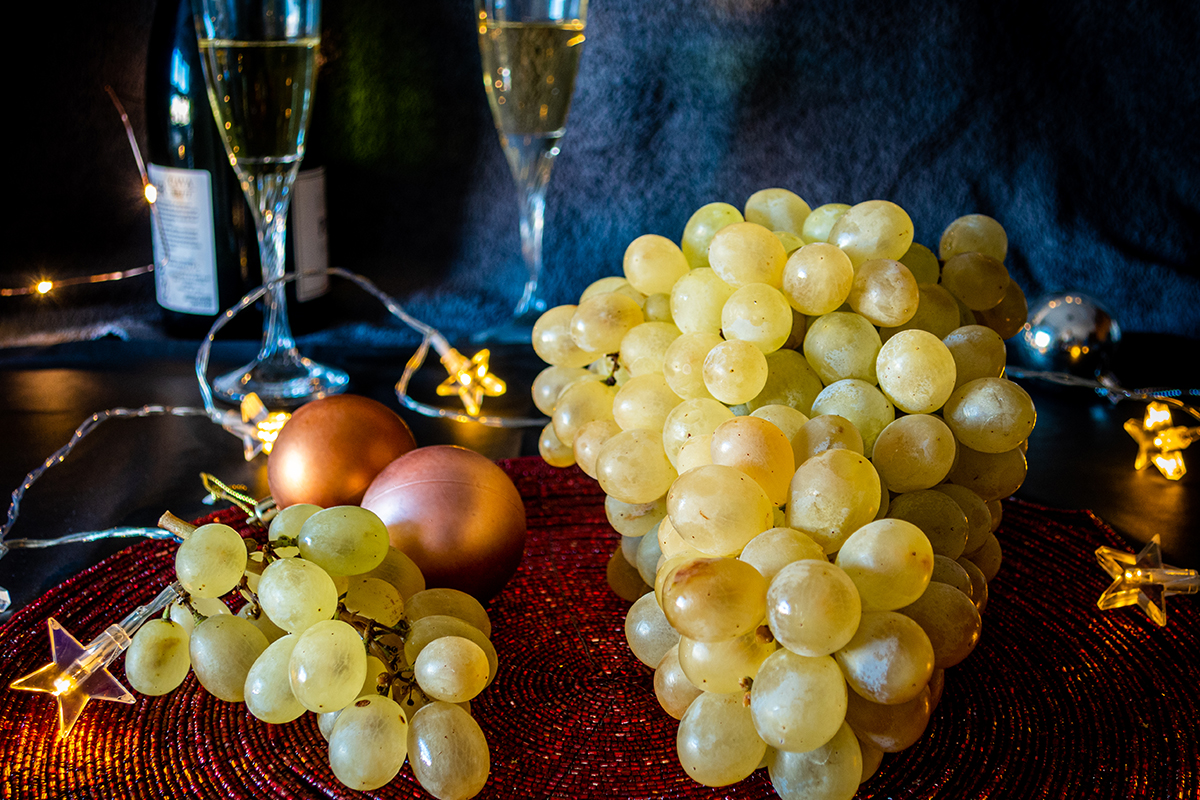
Many of the Christmas traditions in Spain resemble those in the rest of the world. But there are some uniquely Spanish Christmas traditions as well as some adjustments to the classics to add a bit of Spanish flair!
Dia de la Inmaculada Concepción
The first Spanish Christmas tradition to kick off the festive season is on 8 December and consists of honouring the Virgin Mary’s Immaculate Conception (Dia de la Inmaculada Concepción), when cities across the country start putting up a variety of festive decorations and Christmas lights in Spain. Next, an ancient pagan tradition occurs on 21 December, coinciding with the winter solstice. The tradition of the Christmas Bonfires (Hogueras de Navidad) is a festive season celebration unique to Spain and is especially popular in the regions of Granada and Jaen.
La Nochebuena
The Spanish Christmas traditions sync up with the rest of the world around Christmas Eve. In Spain, La Nochebuena is celebrated on the 24th of December and is traditionally a family occasion. Usually, Spanish families will start their Christmas Eve by attending a Christmas Mass at their local church. Then, on to marvelling at nativity scenes and indulging in a grandiose family dinner. But for many Spaniards, this evening is also the perfect excuse to party until they see the sun!
Los Reyes Magos
Christmas Day is spent like most would, with the exception of a very interesting Spanish tradition, or should we say a lack thereof. In Spain, they generally don’t believe in Santa Claus (except for the occasional family). This means that children don’t get presents from old Saint Nick on the 25th of December. Instead, The Three Wise Men (Los Reyes Magos) bring the kids their spoils on 6 January. But before that, the Spaniards ring in the New Year, not with bubbly or kisses, but by attempting to eat 12 grapes by the last chime of midnight (one on each chime). It is believed that should you fail, your year will certainly include bad luck of some sort.
Related: Ring in the New Year with these traditions from around the world.
Spanish Christmas food is a feast you don’t want to miss out on
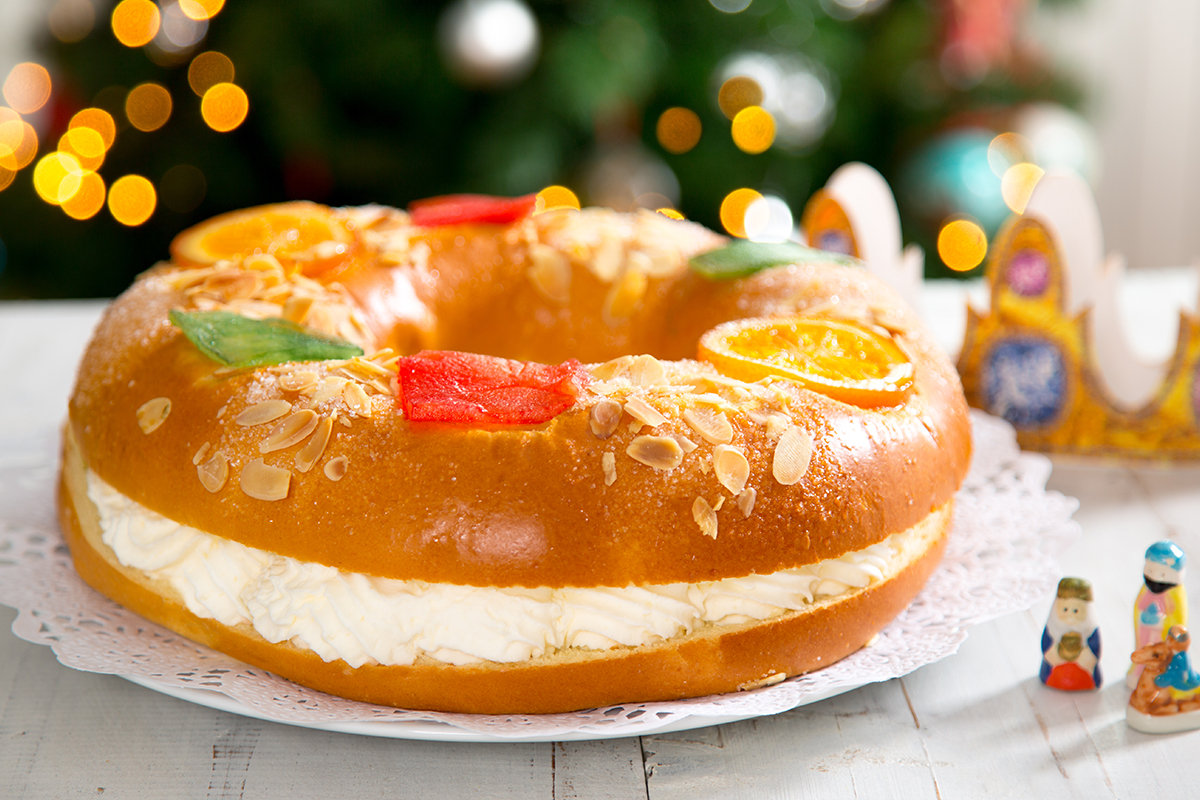
When the 24th rolls around, so does a feast of traditional Spanish meals, desserts and treats to celebrate the season. If you’re lucky enough to experience a proper Spanish Christmas Eve (La Nochebuena), you can look forward to making some mouthwatering culinary memories!
Related: Enjoy the best tapas in Spain no matter when you visit!
First, the main La Nochebuena meal usually consists of Serrano ham along with a variety of seafood (especially king prawns) and fish. Once it’s time to start indulging in sweet treats, the options are aplenty! There’s the delicious almond turrón (similar to nougat) and the shortbread-like polvorón to get the sweet tooth going. Ultimately, the star of the whole festive season is the Roscón de Reyes, a deliciously indulgent cake filled with whipped cream and topped with a variety of candied fruits.
This, however, is usually reserved for the 6th of January when the kids open their presents. This is when the secret ingredients of the Roscón de Reyes are revealed. Hidden inside is a toy and a bean; once cutting the cake, the lucky person to receive the slice containing the toy has the honour of wearing a crown. The receiver of the bean is not so lucky – they’re responsible for next year’s cake!
Barcelona and other cities are buzzing with must-visit Christmas markets
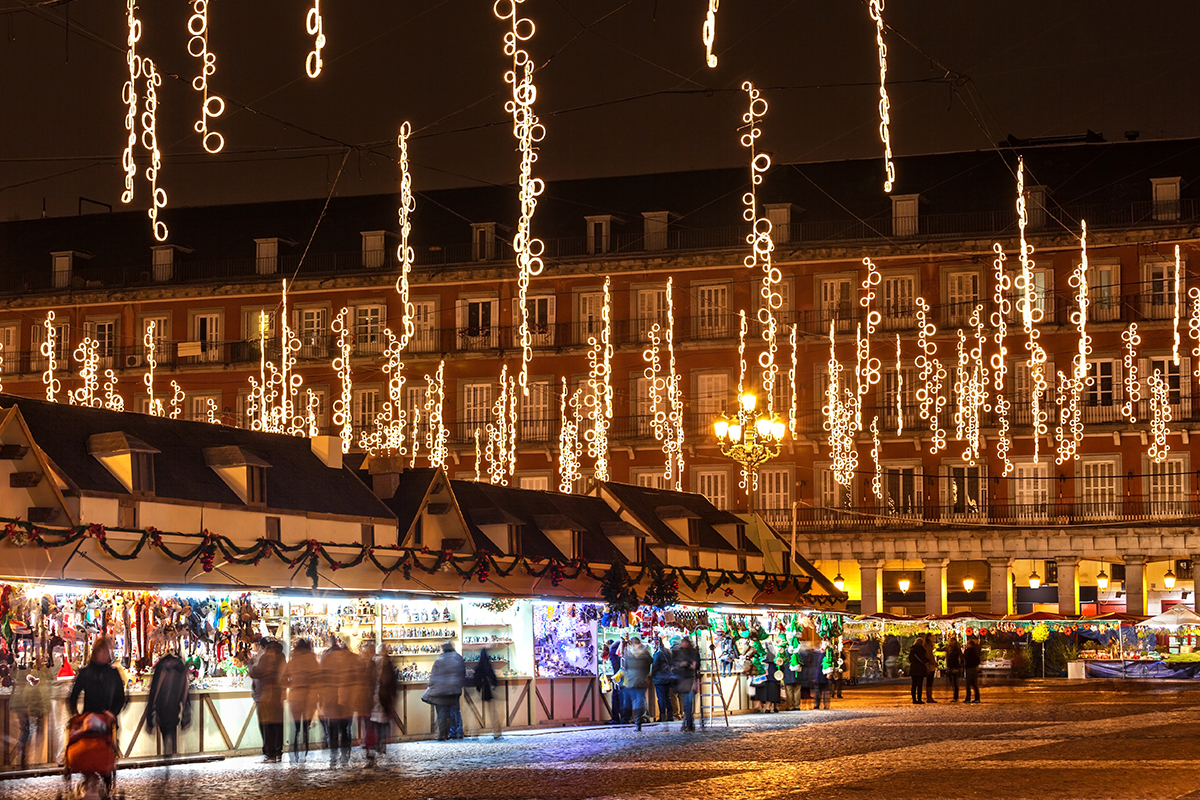
During December, visitors can expect a myriad of Christmas-themed events, nativities, light shows and Christmas markets in Spain. But by far the most famous of them all is the Barcelona Christmas market. Fira de Santa Llúcia is a world-renowned Christmas market in Barcelona known for its local crafts, delectable Spanish Christmas foods and treats, and the most beautiful traditional Christmas decorations. If you’d like to visit this exquisite seasonal market, simply pass through Barcelona between the end of November and Christmas Eve!
Related: Take a look at the top annual events in Spain.
All of your favourite Spanish attractions are a lot less crowded over Christmas
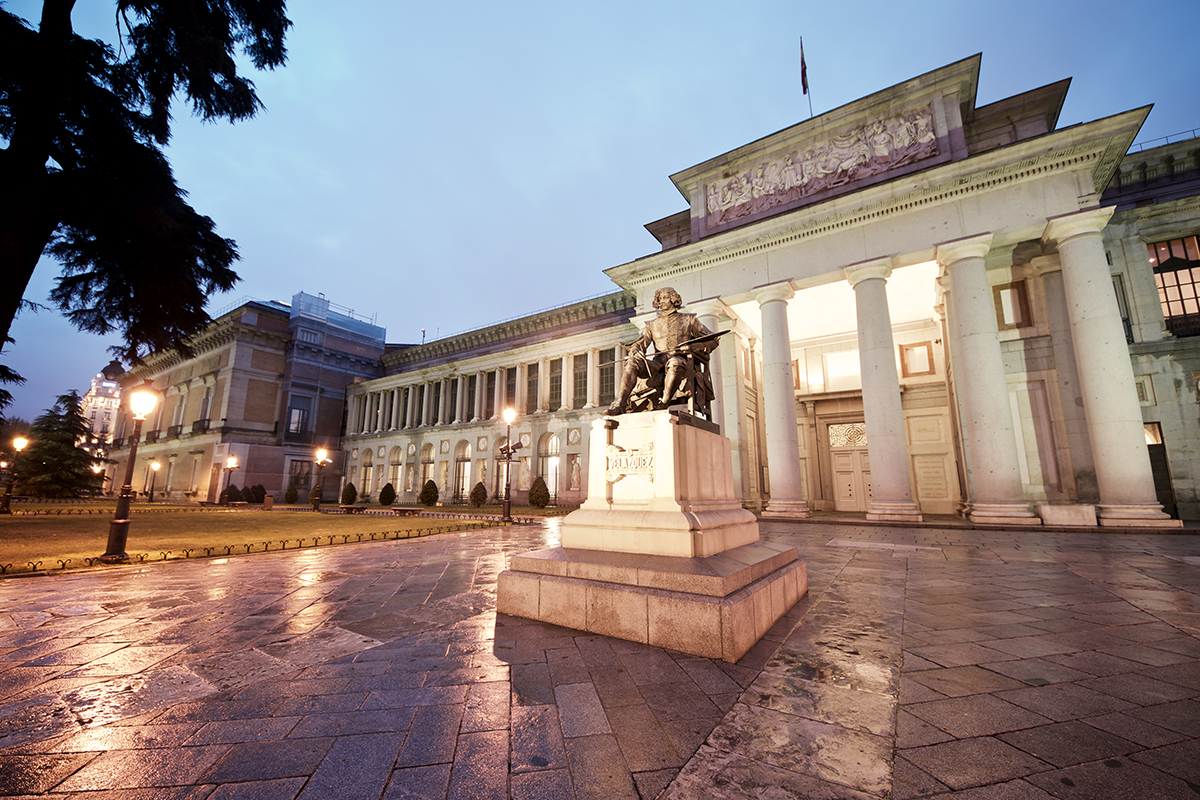
Since December in Spain is one of the colder months, many tourists who associate the country with sun and siesta will avoid visiting around this time. That means some of your bucket-list Spanish attractions might have fewer crowds than at other times of the year, so you can truly appreciate their essence without too much tourist interference.
For example, one of Madrid’s popular attractions, the Prado Museum, might even be an option to visit without booking tickets long beforehand. Similarly, the Sagrada Familia in Barcelona also tends to have much fewer crowds during this time.
Related: Choose to join the excursion to the Sagrada Familia on our Taste of Spain tour!
Also be sure to take advantage of the rare opportunity to stroll the less crowded streets of Seville. You can even marvel at the Alhambra in Grenada without such a noticeable tourist presence.
Related: Visit the Alhambra Gardens & Palace on an optional excursion during our Spain & Portugal Christmas tour!
There are plenty more reasons to visit Spain over Christmas, and any other time of year for that matter. Expat Explore has a range of Spanish tours with departure dates across the year so you can experience the best of this marvellous country in any season!
Book a tour that visits Spain, and get ready to experience the vibrant culture, must-see attractions, local cuisine and age-old traditions of the country that gave the world tapas and Flamenco, to name a few.
